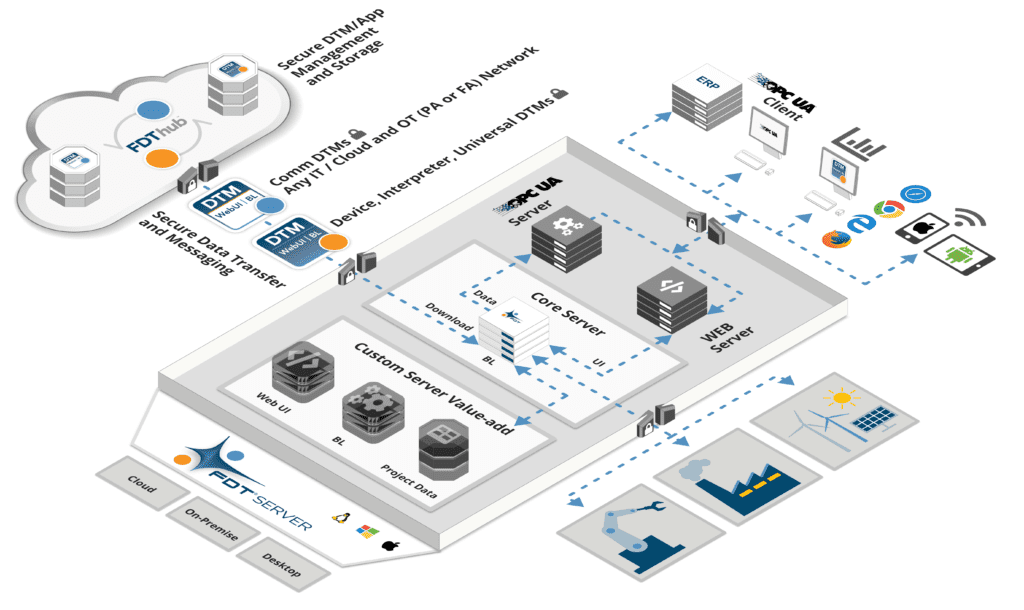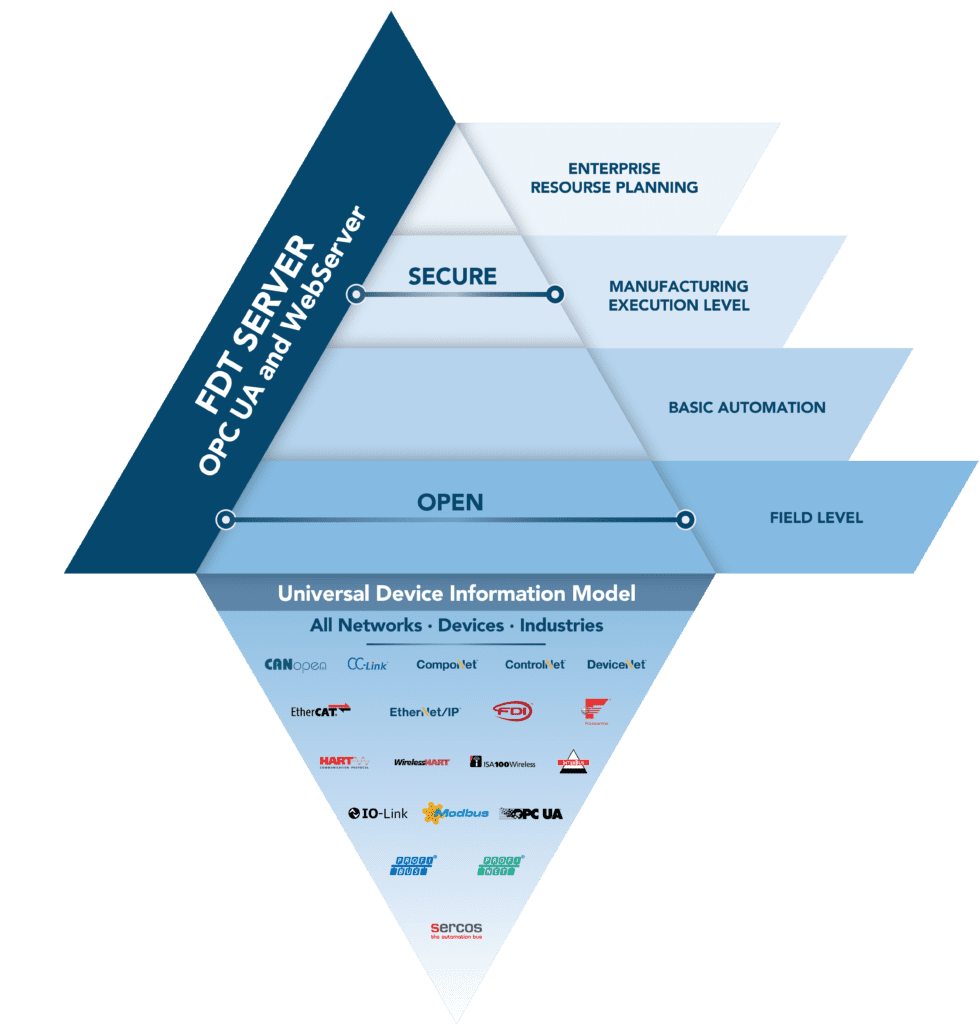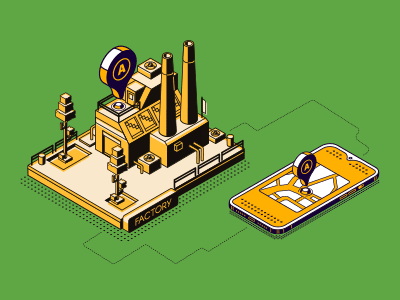FDT 3.0 PLATFORM HELPS DEVELOPERS DELIVER APPS FOR DIVERSE AUTOMATION USE CASES
FDT Group, an independent, international, not-for-profit industry association consisting of leading companies and organizations active in industrial automation, continues to evolve its open standard for enterprise-wide network and asset integration as a data-centric platform.
The organization recently introduced its updated FDT 3.0 standard, which is accelerating the evolutionary journey into the Fourth Industrial Revolution by enabling an ecosystem of FDT-based solutions to meet demands for Industrial Internet of Things (IIoT) and Industry 4.0 applications. The technology’s IIoT ecosystem will unlock universal device integration with mobility and remote access optimizing automated processes and connectivity in the process, hybrid, and discrete manufacturing sectors.
FDT 3.0 empowers the intelligent industrial enterprise with native integration of the OPC Unified Architecture (OPC UA), as well as Control and Web Services interfaces for mobile applications. The technology also employs robust, multi-layered security to safeguard critical automation information and operating data.
Evolving FDT Technology

Figure 1: FDT 3.0 Server – Distributed Architecture
With the updated FDT 3.0 standard, the FDT solution has become platform independent by evolving the fundamental technology on which it is built from the Windows based .NET Framework to an open .NET Core as well as HTML5 and JavaScript. The use of HTML5-based development will allow FDT to be deployed on a much broader range of devices than in the past.
Within the FDT 3.0 architecture, Device Type Managers™ (DTMs™) encapsulate all device-specific data, functions and business rules and serve as standardized “drivers” enabled with a customizable Web User Interface (UI), which employs HTML5 and JavaScript for displaying a graphical representation of parameterization, diagnostic, and prognostics across mobile devices and browsers.
FDT 3.0’s native integration of the OPC Unified Architecture (UA) and mobile remote access capabilities will have a significant impact on plant and factory maintenance personnel, who are looking for condition-based maintenance solutions to reduce their cost for periodic, scheduled repair, and troubleshooting activities.
At the core of FDT 3.0 technology is the new FDT Server, which natively integrates an OPC UA Server for enterprise-wide data access and a web server mobilizing remote operations. This innovative solution transforms asset management practices and business system integration for both automation suppliers and end-users.
The FDT 3.0 standard is closely aligned with the NAMUR NE 175 Open Architecture (NOA) initiative, which addresses asset monitoring and optimization requirements in industrial processing facilities.
Figure 2: The FDT Server solution encompasses a Universal Device Information Model for seamless integration and communication enhancing monitoring and optimization practices.
Security is both comprehensive and robust with FDT 3.0. Developed for consistency across different operating system platforms, the solution features multi-layered security and leverages vetted industry standards such as Transport Layer Security (TLS) enabling Web Sockets Secure (WSS) and Hyper Text Transfer Protocol Secure (HTTPS) security capabilities. This strategy encompasses: Encrypted communications using TLS, role-based user security, 509v3 certificates for authentication, and on-the-wire-security for enabled industrial control protocols.
Driving App Development Efforts
The new FDT 3.0 standard will drive customization of Apps to meet both general and specific end-user requirements throughout the process, discrete and hybrid manufacturing markets. Device suppliers will realize new business opportunities from App development efforts focused on customer requirements in the areas of operations monitoring, asset predictive maintenance, etc. Conversely, end-users can leverage FDT technology to create Apps to solve their own unique operating problems.
FDT 3.0’s incorporation of HTML5 technology is expected to attract a much larger community of automation software developers, who are accustomed to utilizing the modern and user-friendly features found in this development environment.
The latest advancements in FDT technology will drive a wide range of worker mobility Apps tailored to Information Technology (IT)/Operational Technology (OT) assets. Industrial operating companies can now employ the familiar functionality of the integration standard on common mobile platforms. This, in turn, will provide access to additional data from any location with flexible deployment options.
FDT Group’s Technology Marketing Committee, consisting of business strategists and other representatives of major global automation suppliers, has been studying applications and market requirements for FDT 3.0- based mobile Apps. The committee’s work is intended to harness the power of new technologies that hold the promise of smart operations. Members of the group are researching and formulating opportunities for the development of a wide range of App solutions.
The advent for FDT 3.0-based Apps will have a significant impact on several key automation industry stakeholders, including plant operators, system integrators, machine/skid builders and device vendors. The initial use cases for the Apps range from design validation and configuration/commissioning of field instruments to optimization of plant and factory operations, troubleshooting and problem-solving of production equipment, and replacement and commissioning of devices.
With the new generation of FDT DTMs providing platform independence, it is possible to use mobile Apps on different platforms and classes of devices. For example, the developer can write a DTM and then provide the same UI on a laptop, tablet, desktop, or phone—no matter the operating system. Since DTM UIs are now portable and can be displayed in browsers on handheld devices, developers can create user interfaces that are completely responsive per the needs of different devices and screen sizes.
Putting New Solutions to Work
The FDT 3.0 platform for innovation will benefit both control and instrumentation suppliers and end-users by transforming industrial optimization and maintenance strategies. FDT-based mobile apps can be created to meet unique operational requirements and access specific information from individual DTMs. This might include an operational-type app showing any devices with a “Needs Attention” status, or a management-type app providing hourly production results from a given line or facility. These tools can be developed independent of the Distributed Control System (DCS) or Programmable Logic Controller (PLC) application. FDT’s open interface makes it possible to extract data from devices and report it in the app without the need for any additional coding.
In addition, FDT 3.0 enables the inherent features of mobile devices and apps to be integrated to achieve even more powerful capabilities. For example, this solution allows end-users to deploy near-field communications using GPS for geo-location purposes. They can utilize mobile location service capabilities to confirm whether technicians performing a particular task are physically located in an environment where they are authorized to work.
Figure 3: FDT Apps empower innovative business models to simplify operations and increase productivity.
With apps employing FDT Web Services, maintenance technicians are no longer bound to a centralized tool or handheld device connected to an individual instrument; instead, they can use tablets, smart phones, and other mobile devices to carry out their daily activities. This includes solutions bringing FDT data much closer to the engineer or technician and enabling troubleshooting and monitoring of instruments’ critical operating parameters to be performed remotely to ensure they are functioning according to specification.
Mechanisms such as QR codes can also be employed with smart phones to share information with remote workers as part of collaborative maintenance activities. Field workers can take pictures with their secure, authenticated smart phones or tablets to provide a host of device-specific details. Programmers have the option to write algorithms to simplify reporting. Apps can even be embedded in plant floor machines to perform certain functions.
Furthermore, it is possible to bring together multiple apps into one overarching app so that end-users can move from basic tasks like the configuration of instruments to broader, more ambitious initiatives around digitization and Industry 4.0. For instance, an app could be created to monitor and optimize energy consumption at a manufacturing site. The facility operator would be able gather data from all the AC drives controlling motors, or boilers used for steam generation, to monitor and control the facility’s energy footprint and green operating performance.
Thanks to FDT 3.0’s modular and flexible platform, the FDT Group can deliver tools that the developer community needs to advance solutions for device configuration and monitoring and other crucial applications. The objective is to provide an interface that allows automation companies to design a wide range of FDT-compliant apps, whether they be for general distribution to customers or to solve a problem for a particular industrial organization.
Conclusion
FDT Group’s standard is now empowering the global industrial sector with flexible deployment and mobility solutions intended to optimize facilities with agile operations. With the latest FDT 3.0 advancements, the technology maintains its core communication and diagnostic capabilities, but also offers robust, multi-layered security to enable secure remote access to data through mobile devices and apps.
The FDT 3.0 standard enables automation developers to employ a user interface that is versatile enough to accommodate a host of plant and factory operating requirements, including device configuration, commissioning, real-time monitoring, information sharing, and other important tasks. At the same time, the flexibility of the FDT solution allows end-users to provide valuable input on the app development process to meet their specific use case requirements.
Author: Dr. Vivek Hajarnavis – Technical Marketing FDT Group




